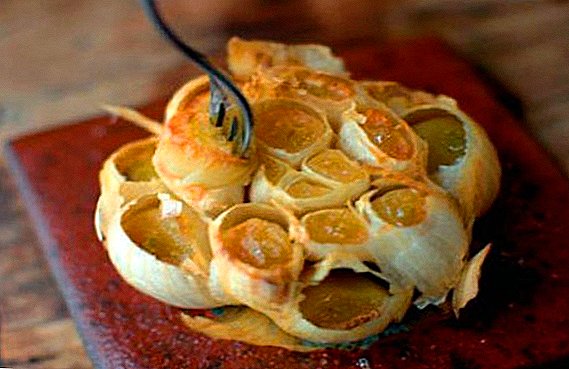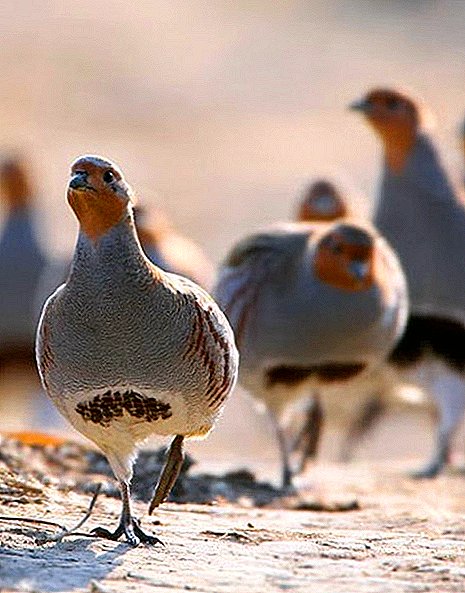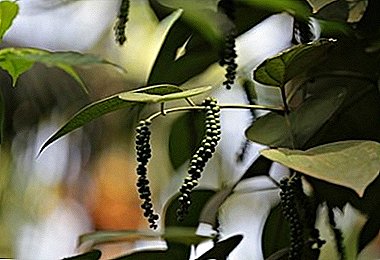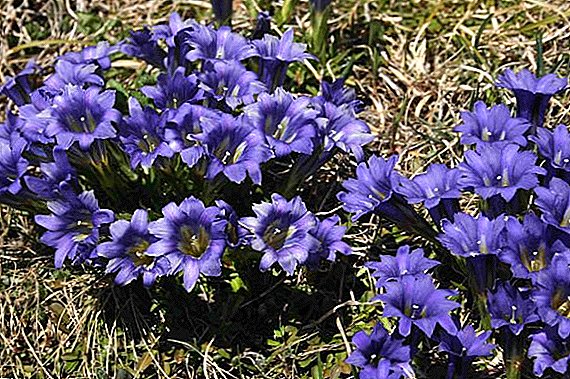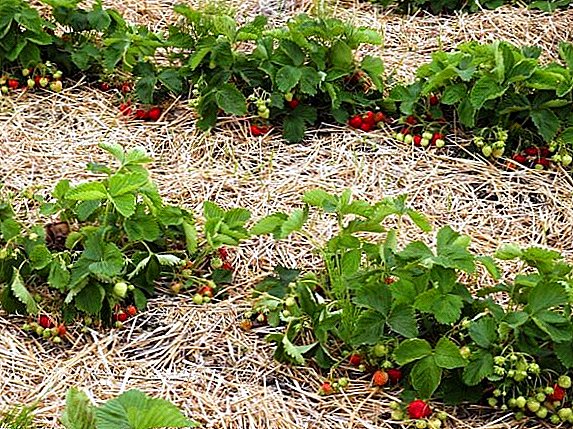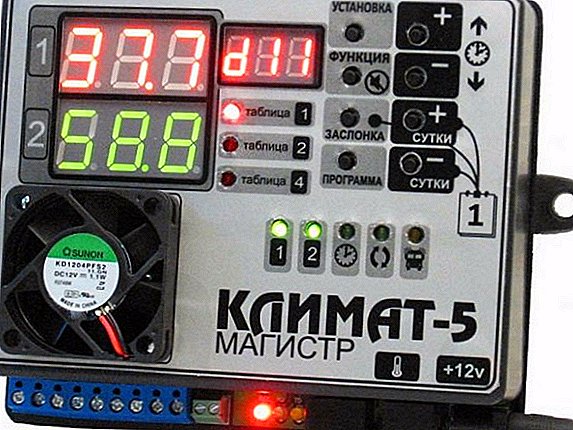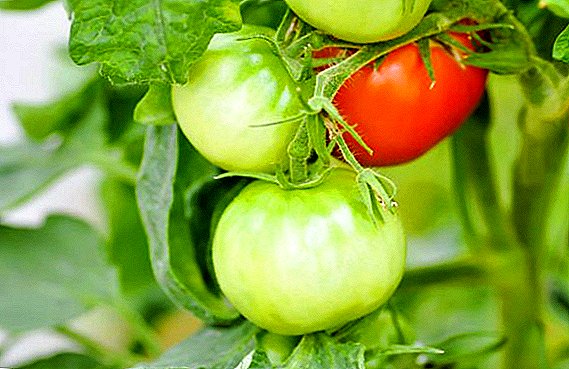 Sometimes it happens that for a good harvest vegetables need a little help. For example, when tomatoes begin to bear fruit, they may need additional feeding: if the soil is depleted, tomatoes have been grown on the site for many years or similar manipulations have not been carried out in advance. In any case, you need to understand that for each period of the growing season there is a suitable type of fertilizer that does not harm the plant and fill exactly those missing elements that it needs at the moment.
Sometimes it happens that for a good harvest vegetables need a little help. For example, when tomatoes begin to bear fruit, they may need additional feeding: if the soil is depleted, tomatoes have been grown on the site for many years or similar manipulations have not been carried out in advance. In any case, you need to understand that for each period of the growing season there is a suitable type of fertilizer that does not harm the plant and fill exactly those missing elements that it needs at the moment.
Did you know? Tomato is an excellent low-calorie chocolate substitute, because its pulp contains no less serotonin, so you can improve your mood without worrying about your body shape.
When feed up?
During the season, feeding of tomatoes is carried out 3 times: at the beginning of the growing season, during the flowering period and the beginning of the ovary, during the period of mass fruiting.
- At the beginning of the growing season, young bushes need nitrogen. Nitrogen - the main element that stimulates the growth of green mass, in the period of its active development is consumed very strongly. It is logical that at this time fertilizers are added to the soil, which contain it in large quantities: saltpeter, urea, etc. Nitrogen is introduced 15 days after landing in the ground. Then feeding is done again, 2 weeks after the first one.
- During the flowering period - at this time tomatoes need phosphorus and potassium. It is good to use yeast dressings, superphosphate, a mixture of iodine and milk during the flowering period, and spraying with boric water will also have a good effect on the ovary of the fruit.
- Mass fructification - here you will need phosphorus and potassium. Fertilizers for the last two dressings are used the same, the difference, perhaps, is only in the fact that during the fruiting period, all kinds of fertilizers should be minimized or used if necessary.
The best high-yielding varieties are the tomato "Bull Heart", "Caspar" and "De Barao".

Features feeding during fruiting
During fruiting, fertilizers rich in phosphorus and potassium should be applied, and nitrogen should be avoided at this time. It is well known that nitrogen is able to increase the size of the fruits and their quantity, but at the same time, it tends to accumulate in the flesh of the vegetables, thus making them dangerous to human health. Next, we look at how to feed the tomatoes using traditional remedies and chemicals.
Did you know? Tomato peel is found in the skin of a tomato, just like carrots. The secret of why tomatoes are red, rather than orange, like carrots, lies in the fact that the peel of tomatoes also contains anthocyanin, which is responsible for the purple color. The balance of these two pigments gives a red color.
Folk remedies
Let's first understand what you can feed the tomatoes without resorting to the use of chemical fertilizers.
- A mixture of ash, iodine and boric acid. Ash contains an almost complete list of trace elements that the plant needs, in addition, a solution containing iodine and boric acid is a good fungicide against pests and fungi. The working solution is prepared as follows: 1 kg of ash is diluted in 7 liters of boiling water, allowed to stand for a day; the mixture is then filled with water to a volume of 10 l and 1 jar of iodine and 10 g of boric acid are added to the solution. Under each bush poured 1 l of such funds. Fertilizer make a single.

Potassium deficiency
- Top dressing with mullein or chicken droppings with Mortar or Kemira. Prepare a solution of mullein in its usual concentration (1: 6) and add "Kemira" or "Mortar" at the rate of 1 tbsp. l funds for 10 l of solution of mullein. Drugs can be combined with a solution of bird droppings at a concentration of 1:20. Under each bush of determinant varieties of tomato make 1.5 liters of solution, and under tall - 2-2.5 liters.
- Serum. A solution of serum and iodine is used for foliar feeding and is held about once a week. To prepare the solution, combine 1 liter of serum and 20 drops of iodine, and then dilute the mixture with 20 l of water. Spray the vegetative part in dry and calm weather, morning or evening.
- Boric water. Spraying the green mass with boric water will make the fruit sweeter and increase the sugar content in them. Such processing is carried out at the flowering stage, but since tomatoes are reparative plants, it is possible to carry out spraying at the fruiting stage. A solution of boric water is prepared at the rate of 1 g of acid per 1 l of water.

Shortage of boron
- Yeast. To feed tomatoes, live yeast is combined with nettle extract and wood ash. The solution can be used during the flowering period, but it is especially useful during the formation of ovaries and fruiting, as yeast is a fruit stimulator.
Important! It is recommended to use yeast dressings only in areas with a strong soil depletion, since yeasts stimulate the activity of bacteria, as a result of their vital activity, a lot of nitrogen is released. Recall that excess nitrogen harms no less than its deficit, especially during fruit loading.
Purchased drugs
- Superphosphate - a preparation containing many natural phosphates, which are found in water-soluble compounds and are well absorbed by plants. During the formation of the fruit, the plant can lose up to 85% of the accumulated phosphorus, therefore it is so important to replenish its quantity in time.

Phosphorus deficiency.
- Auxins (or preparations based on auxins) - stimulate the formation of new fruits, accelerate their ripening and growth, as well as increase the presentation. These substances of hormonal origin are used mainly in combination with cytokines. The most used and common drug based on auxins - "Kornevin" - it is often used for rooting seedlings or other plants that are undergoing transplantation. To improve the yield in the fruiting phase, alpha naphthylacetic acid (NUA or KANU) is used. The drug is quite active, but when complying with the norms of introduction, it does not accumulate in the plant tissues, is not toxic and is intended for widespread use. Available in the form of a powder grayish or light yellow in color, soluble in water and organic solvents. Doses and application rates are indicated on the package.
Not some fertilizer
It is possible to improve the yield not only with the help of fertilizers, the correct agricultural technology for growing tomatoes includes several other secrets that are no less important for increasing fees.
Important! Cutting the stem can be done only when the tomatoes are poured, because after cutting the tomatoes are no longer poured, but will simply blush.
- Once a week you need to pick off the excess leaf at the bottom of the bush. Remove 1-2 leaves at a time, tear off leaves that are very close to the ground (almost touch it), and only near those brushes that have already poured. From above - where the brushes form, the leaves do not break off.
- After the beginning of fruiting in indeterminant varieties of tomatoes, pinch the tops to stop the growth of green mass and accelerate the ripening of fruits. Pinching or cleaving is carried out as usual, at an angle of 45 ° at a distance of 5 cm from the last upper fruiting brush.
- If you need to remove already red vegetables from the bush, there is one very tricky way: for this, a through cut of the stem is made about 2-3 cm from the ground. Thus, you start chemical reactions that stimulate the transition of chloroplasts to chromoplasts and the tomato gets a beautiful red color.
- Landing layout. Competent planning will also help you increase yields, because it is simple math: more bushes - more tomatoes. But there is one "but." The fact is that an average of 1 square. m plot should be placed no more than 4 bushes, if you place more plants - they will not give their maximum yield. It is interesting that if there are fewer bushes on this quadrature, the yield will also fall. The problem is solved in one very tricky way: in order to fit more bushes in the garden, simply choose plants of two different varieties - 4 tall bushes and 4 low-growing bushes. Tall sit down on the north side, and stunted - from the south. Thus, plants do not interfere with each other, since their growing season literally takes place in different planes and each of the bushes gives a good harvest.
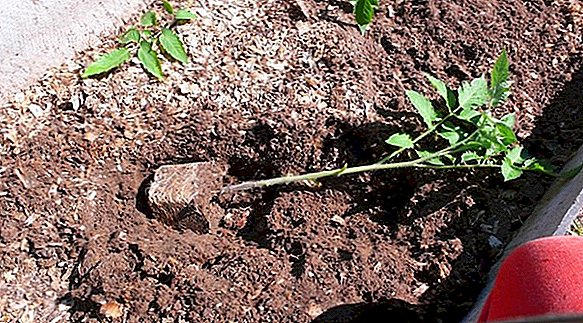
Learn how to water and tie up tomatoes in open ground.
- Growth root system. Manipulations with the introduction of microelements will be ineffective if the plant is simply too weak root system in order to properly feed the fruits. To build the root system of tomato bushes spud. This is done only with wet soil and only during periods of active growth of the root system. The active phases of growth of the root system occur in the phase of enhanced vegetation (this can be understood by the appearance of small hillocks on the lower part of the stem) and the first flowering phase.
Important! Tomatoes are light-loving plants, and an increase in daylight hours dramatically affects the quantity and quality of the crop. Without the ability to affect daylight hours, the amount of light can be controlled by orientation in space: plant seedlings from north to west, and the planting will always be exposed to sunlight.Now you know a few professional agronomic techniques that are used to increase the yield of tomatoes, but it is worth remembering that an active top dressing still needs to be carried out before the beginning of the fruiting period. Fertilization during this period is only a small contribution of what plants should receive during the development of green mass and flowering. At different periods of the growing season, the plant needs different microelements and at different periods of the growing season it is absorbed by it completely differently, therefore, if the moment is lost, it will not be returned. These points should be taken into account in the care of tomatoes.



